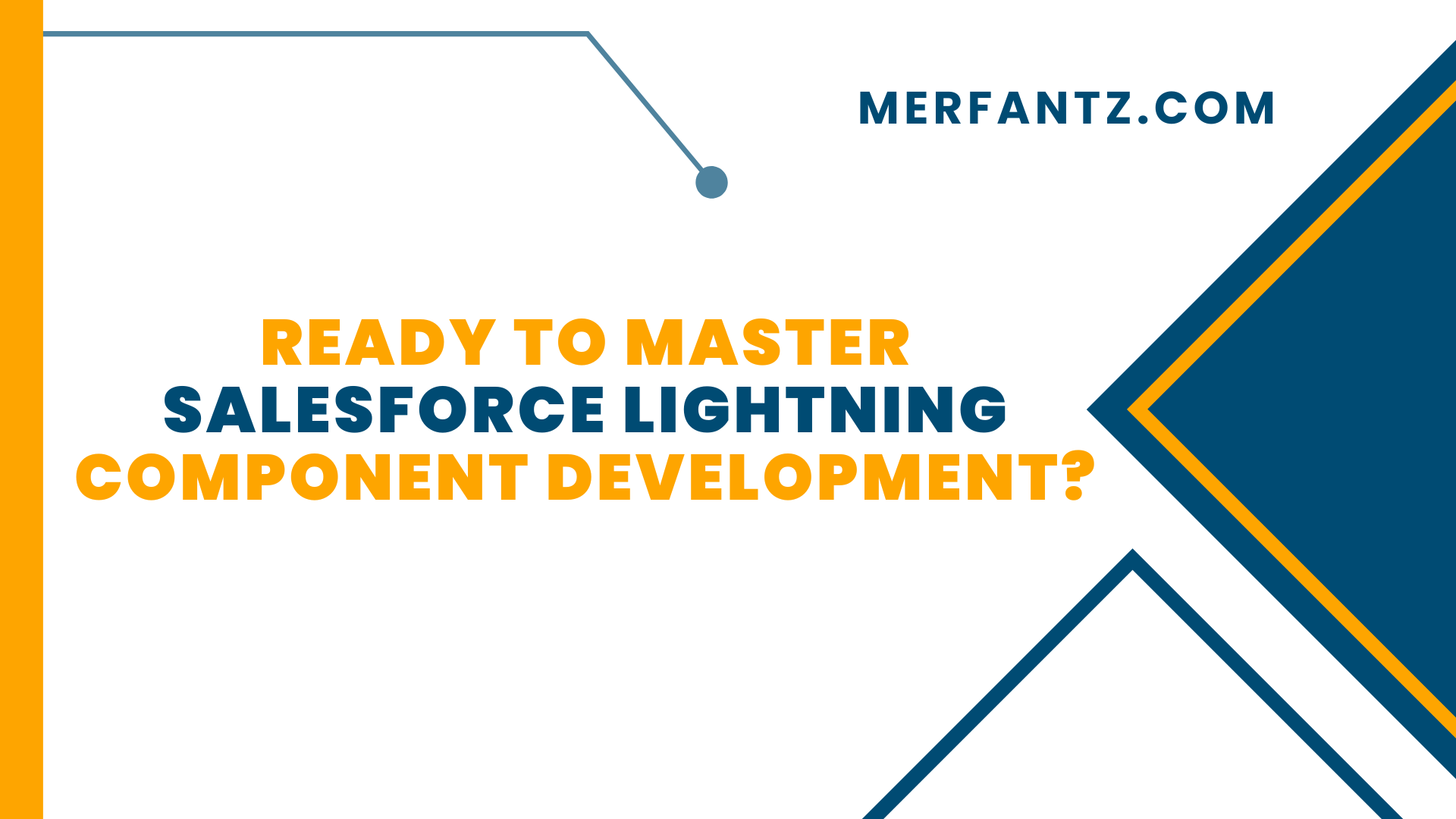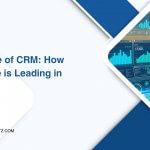Introduction to Lightning Components
In today’s rapidly evolving technological landscape, Salesforce Lightning Components have emerged as a game-changer in the world of app development. These Lightning Components provide a robust framework for creating dynamic and responsive user interfaces that seamlessly integrate with Salesforce. Whether you’re a seasoned developer or just starting, understanding the fundamentals of Lightning Components is essential. In this blog post, brought to you by Merfantz Technologies, we’ll embark on a journey to master Salesforce Lightning Component development, equipping you with the skills to create powerful and efficient applications.
By grasping the concept of Lightning Components, you’ll gain the ability to craft modern, engaging user experiences that can be customized to meet specific business needs. We’ll explore the components’ architecture, advantages, and their pivotal role in enhancing user productivity. With the expertise you’ll gain, you can contribute to creating lightning-fast applications that streamline business processes, boost customer satisfaction, and take your career to new heights.
Setting Up Your Development Environment
Before diving into the world of Lightning Component development, it’s crucial to set up a solid foundation. In this section, we’ll guide you through the process of configuring your development environment. From installing the necessary tools like Salesforce CLI to creating a dedicated Lightning-ready Developer Org, we’ll ensure you have everything in place to kickstart your learning journey effectively.
At Merfantz Technologies, we understand the importance of a seamless setup process. We’ll walk you through step-by-step instructions, ensuring that even if you’re new to Salesforce development, you can follow along without a hitch. Our comprehensive guide will empower you to tackle any technical obstacles and enable you to focus on honing your Lightning Component skills without worrying about configuration issues.
Understanding Lightning Component Structure
To harness the full potential of Salesforce Lightning Components, it’s essential to grasp their underlying structure. Lightning Components are composed of three crucial components: the markup, the client-side controller, and the server-side Apex controller. In this section, we’ll delve into the anatomy of these components, giving you a clear understanding of how they work together to create seamless user experiences.
At Merfantz Technologies, we believe in a hands-on learning approach. That’s why we’ll provide you with real-world examples and code snippets that break down each component’s role. By the end of this section, you’ll not only understand the theory but also be able to apply it in practice, setting the stage for building robust Lightning Components that align with industry best practices.
Designing Dynamic Lightning Components
The visual appeal and functionality of your Lightning Components play a pivotal role in creating impactful applications. In this segment, we’ll explore the art of designing dynamic Lightning Components. We’ll take you through the Lightning Design System, a toolkit that ensures your components have a consistent, user-friendly appearance. From buttons to icons, typography to spacing, you’ll master the art of crafting visually appealing interfaces.
Merfantz Technologies understands that design is as crucial as functionality. We’ll share tips on customizing the look and feel of your components using CSS, empowering you to tailor your user interfaces to match your brand’s identity. By the end of this section, you’ll be equipped with the skills to captivate users not only with seamless functionality but also with stunning visual aesthetics.
Managing Component State and Data
Effective component development requires the ability to manage state and data efficiently. Lightning Components utilize a reactive architecture, meaning they respond to changes in data automatically. In this part of our journey, we’ll delve into managing component state, both locally and globally. You’ll learn how to handle user interactions, update data dynamically, and maintain a smooth user experience.
At Merfantz Technologies, we understand that data management can be a complex aspect of component development. Our expert insights and practical examples will guide you through scenarios where you need to maintain state across components or manage data retrieval from Salesforce databases. By mastering these techniques, you’ll be well-equipped to build seamless, interactive Lightning Components that provide a dynamic user experience.
Working with Events and Communication
Communication between Lightning Components is crucial to building comprehensive applications. In this section, we’ll explore the mechanics of events and communication in Lightning. You’ll discover how components can interact, pass data, and respond to actions across different parts of your application. This skill is essential for creating cohesive, interconnected apps that provide users with a seamless journey.
At Merfantz Technologies, we believe that understanding component interaction is a cornerstone of successful development. Our hands-on approach will guide you through scenarios where components need to communicate, enabling you to master techniques such as component events and application events. With these skills, you’ll be able to build modular, flexible applications that can be easily extended and adapted.
Server-Side Actions and Apex Controllers
While client-side logic is powerful, there are times when server-side actions are essential for data manipulation and processing. In this section, we’ll dive into using Apex controllers to perform server-side operations. You’ll learn how to invoke server-side methods from your Lightning Components, interact with Salesforce data, and ensure a secure and efficient application flow.
At Merfantz Technologies, we recognize the significance of server-side actions in building robust applications. Our comprehensive guidance will walk you through creating Apex controllers, exposing methods, and handling data securely. By mastering this skill, you’ll be prepared to tackle complex business logic scenarios and create Lightning Components that seamlessly integrate with Salesforce data.
Debugging and Testing Lightning Components
Even the most skilled developers encounter bugs and challenges in their projects. This section is dedicated to debugging and testing your Lightning Components. You’ll gain insights into tools and techniques to identify and resolve issues efficiently. By developing a systematic approach to debugging, you’ll enhance your development workflow and ensure the reliability of your components.
At Merfantz Technologies, we emphasize the importance of a thorough testing process. We’ll guide you through techniques such as using the Lightning Inspector and leveraging browser developer tools. By the end of this section, you’ll have the skills to diagnose problems, optimize performance, and create robust Lightning Components that work flawlessly in various scenarios.
Best Practices for Lightning Component Development
Building efficient and maintainable Lightning Components requires adherence to best practices. In this section, we’ll explore guidelines that ensure your components are scalable, reusable, and aligned with industry standards. You’ll learn about structuring your components, optimizing performance, and creating code that’s easy to maintain and enhance over time.
At Merfantz Technologies, we believe that excellence lies in following best practices. Our insights will help you avoid common pitfalls and make informed decisions while developing Lightning Components. By internalizing these best practices, you’ll be well-prepared to create high-quality components that contribute to the success of your applications.
Advanced Topics in Lightning Components
As you progress in your Lightning Component journey, you’ll encounter advanced concepts that can take your skills to the next level. In this final section, we’ll provide a glimpse into some of these advanced topics. From Lightning web components and integration with external services to accessibility considerations and security measures, you’ll be primed to explore new horizons.
At Merfantz Technologies, we understand the importance of staying ahead in a dynamic development landscape. We’ll introduce you to these advanced concepts, providing you with the foundation to dive deeper into areas that align with your project requirements and aspirations. With these tools in your arsenal, you’ll be able to craft sophisticated Lightning Components that stand out in the Salesforce ecosystem.
FAQs (Frequently Asked Questions)
Why should I learn Salesforce Lightning Component development?
Learning Salesforce Lightning Component development equips you with the skills to create modern, interactive, and efficient applications within the Salesforce ecosystem. Lightning Components offer a responsive user interface, seamless integration with Salesforce data, and the ability to build personalized experiences. Mastering this skill opens doors to career opportunities and empowers you to contribute to cutting-edge app development.
Do I need prior programming experience to learn Lightning Component development?
While prior programming experience is beneficial, it’s not mandatory. Our blog post provides clear explanations, real-world examples, and step-by-step guides that cater to both beginners and experienced developers. Even if you’re new to programming, our resources will help you grasp the concepts and techniques required for successful Lightning Component development.
How can Merfantz Technologies assist me in my learning journey?
Merfantz Technologies is dedicated to supporting your learning journey. Our blog post covers a comprehensive range of topics, from fundamental concepts to advanced techniques. We provide practical examples, insights, and best practices that empower you to become proficient in Lightning Component development. Additionally, you can explore our other resources, courses, and community forums to enhance your skills and connect with like-minded developers.
Can I use Lightning Components for my own projects?
Absolutely! Lightning Components can be used to create a wide variety of applications, from simple UI enhancements to complex business processes. Whether you’re developing for personal projects, customizing Salesforce for your organization, or exploring freelance opportunities, mastering Lightning Component development enables you to build versatile and impactful solutions.
How do you master Lightning web components?
Mastering Lightning web components requires learning their syntax, lifecycle, and integration within the Lightning Platform. Practice building components, utilize Salesforce data services, and explore advanced features like event handling.
What is Lightning component development?
Lightning component development involves creating reusable, dynamic user interface elements within the Salesforce Lightning Platform. These components enhance user experiences, seamlessly connect with data, and enable efficient app development.
Which architecture is used in Lightning component development?
Lightning component development follows the “Component-Based Architecture,” where applications are built by assembling reusable components. These components communicate with each other and form a cohesive application.
What are the components of Salesforce Lightning?
Salesforce Lightning comprises several components, including:
- Lightning Components: Reusable UI elements.
- Lightning App Builder: Drag-and-drop interface for building apps.
- Lightning Experience: Modern user interface for Salesforce.
- Lightning Web Components: Framework for building web components.
- Aura Framework: Framework for building Aura components (legacy).
Conclusion
In conclusion, mastering Salesforce Lightning Component development is a transformative journey that empowers you to create powerful, user-centric applications. Merfantz Technologies is committed to being your guide on this journey, offering insights, practical examples, and expert guidance every step of the way. Whether you’re looking to enhance your skills for career growth or contribute to innovative app development, our comprehensive blog post has equipped you with the knowledge needed to excel in the realm of Lightning Components. Join us as we shape the future of Salesforce development together.
Author Bio
Co-Founder & CMO at Merfantz Technologies Pvt Ltd | Marketing Manager for FieldAx Field Service Software | Salesforce All-Star Ranger and Community Contributor | Salesforce Content Creation for Knowledge Sharing






